Japan is home to 109 active volcanoes, including the beautiful Mount Fuji and an undersea volcano that built a new island only last year. Japan’s 6,800 or so islands are dispersed over the Pacific Ring of Fire, a zone of intense seismic activity, which explains why the country has so many volcanic peaks. This makes Japan very vulnerable to natural disasters such as earthquakes and volcanic eruptions.
This has had a significant effect on Japanese society and the growth of the country’s crowded coastal cities. The smoldering volcanoes have long been a source of awe and adoration for the inhabitants, and they have been depicted in many works of art and literature. Mount Fuji, one of Japan’s numerous volcanoes, is often regarded as the country’s most significant and recognizable natural landmark.
12. Mount Usu
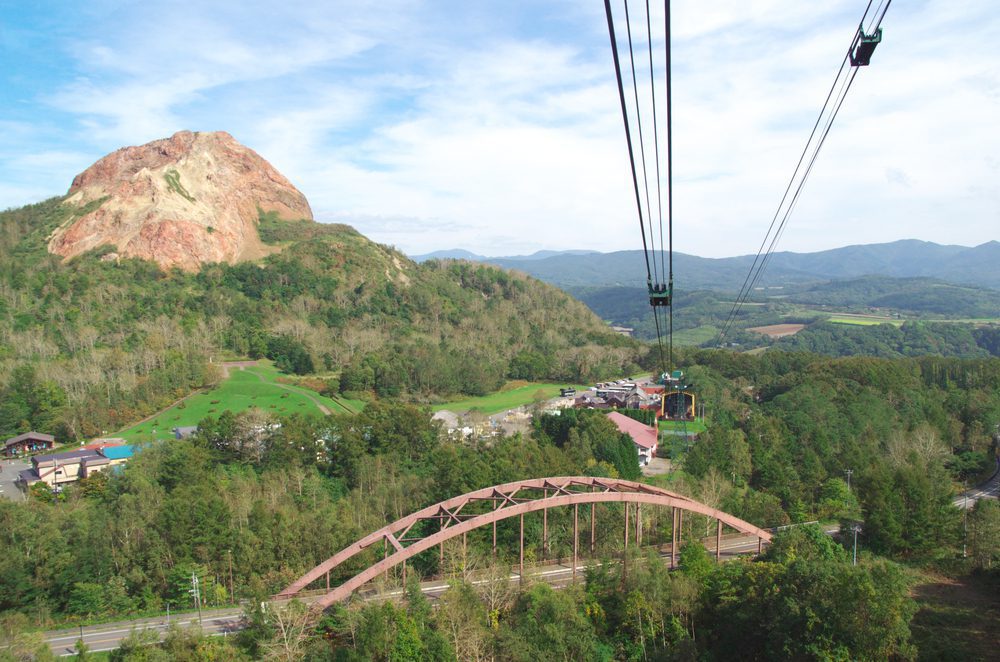
Majestic view of Showa Shinzan in Hokkaido, Japan. Image source: KOOKOO/Shutterstock.com
Mount Usu is a prominent peak in the beautiful Shikotsu-Toya National Park, which is located in the western part of Hokkaido, Japan’s second-largest island. Despite its relatively modest height of 733 meters, the stratovolcano casts a formidable shadow over the forests and fields to its immediate north and east. You can take a picturesque ropeway to the top and look out over the whole park and the sparkling waters of Lake Toya, which is nestled in a caldera to one side. Showa-shinzan, a unique lava dome, can be found inside the park, along with relaxing hot springs and several craters created by Mount Usu’s most recent eruption in 2000.
11. Mount Norikura
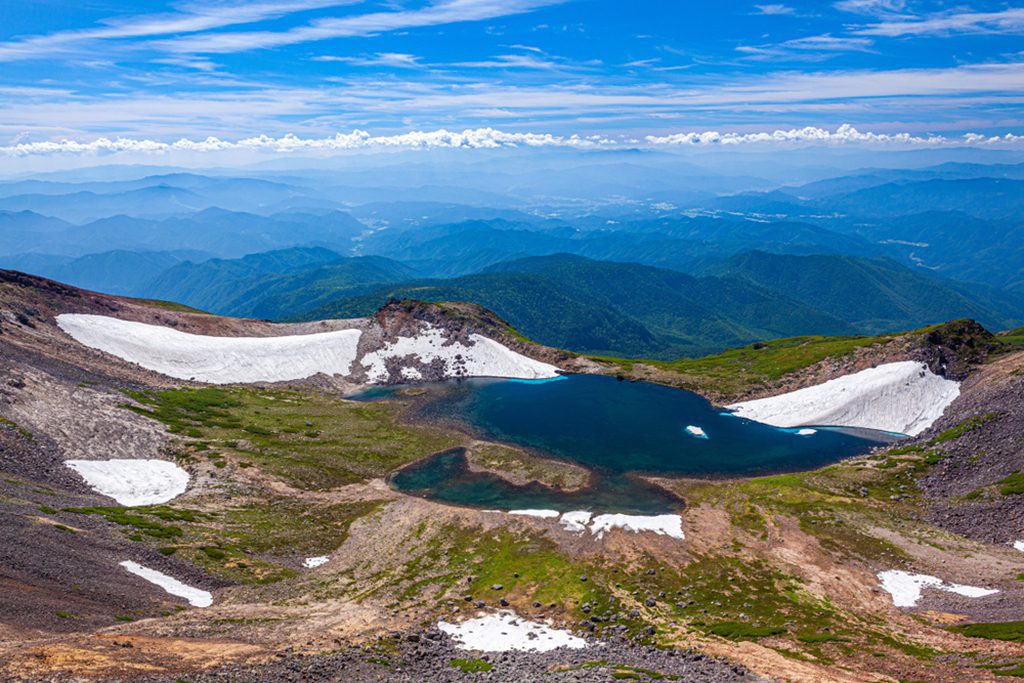
Scenic beauty of Mount Norikura in Nagano Prefecture. Image source: w.aoki/Shutterstock.com
Mount Norikura, at a whopping 3,025 meters, is the third-tallest volcano in all of Japan. The Chubu-Sangaku National Park is home to the snow-capped stratovolcano, which is a part of the Hida Mountains, and is surrounded by beautiful valleys, ravines, and rivers. Numerous crater lakes and alpine meadows are tucked away on its slopes, while towards the top you could see solidified lava flows. Mount Norikura, whose name translates to “riding saddle” in Japanese, is a popular destination for hikers and climbers because of its stunning landscape and rewarding summit views.
10. Mount Yake
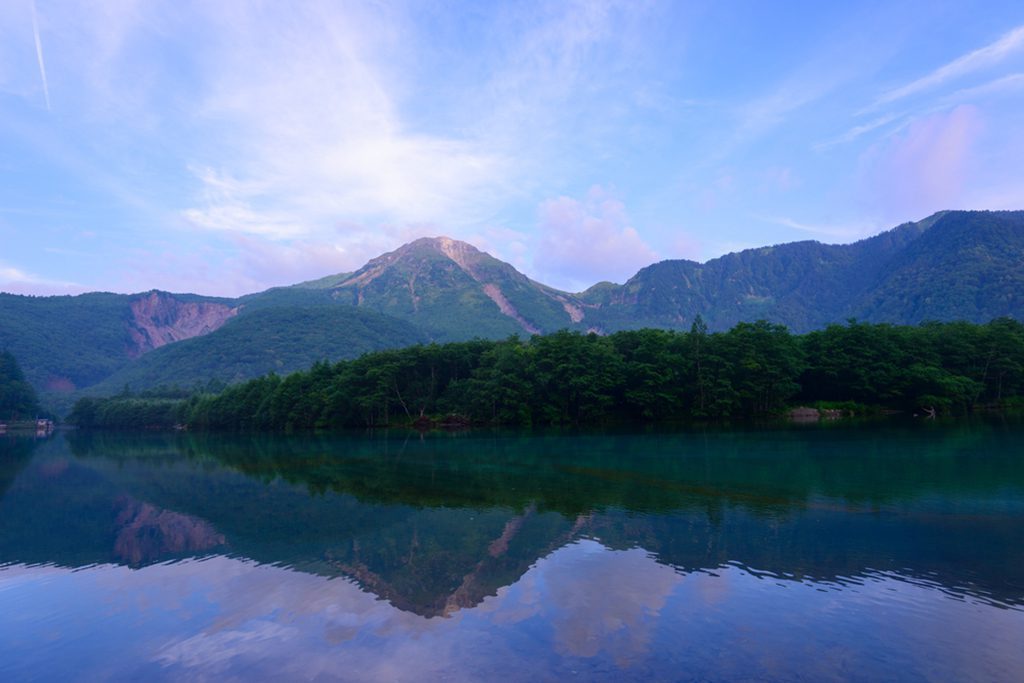
Serene Lake Taisho with Mount Yake in the backdrop. Image source: Scirocco340/Shutterstock.com
Mount Yake, one of the most active volcanoes in the Hida Mountains, can be found in the central Japanese prefecture of Nagano. As a result, several hardened lava fields can be seen on its slopes, while steam and gas continue to be released from a fumarole close to the top. Mount Yake’s two summits provide for a breathtaking panorama, and a charming small crater lake can be found between them, all of which overlook the placid waters of Lake Taisho. Mount Yake, which has a peak elevation of 2,455 meters, is rightly enshrined on the list of the 100 Famous Japanese Mountains.
9. Suwanosejima
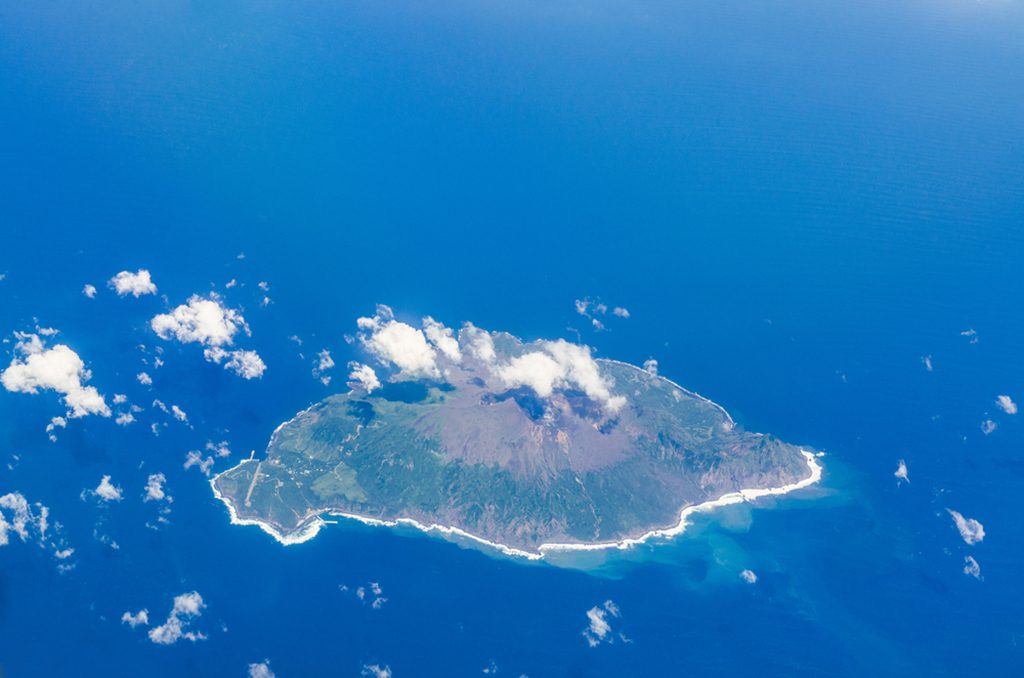
Breathtaking aerial view of Toshima Island amidst the blue ocean. Image source: trusjom/Shutterstock.com
Suwanosejima, the second-biggest island in the peaceful and remote Tokara archipelago, rises sharply from the glistening seas of the East China Sea. The 796-meter-tall cone of Mount Aso, one of the most active volcanoes in Japan and the world, sits in its center. Only around 50 people make their home on the island because of its frequent and catastrophic eruptions. Many times over its existence, it was abandoned because of rising hazard levels. The sharp contrast between the stratovolcano’s arid slopes and the glistening sea surrounding it gives the mountain an amazing appearance. The subtropical island of Suwanosejima, home to a smoking volcano, is located about 9 hours by boat from the Japanese mainland.
8. Shinmoedake
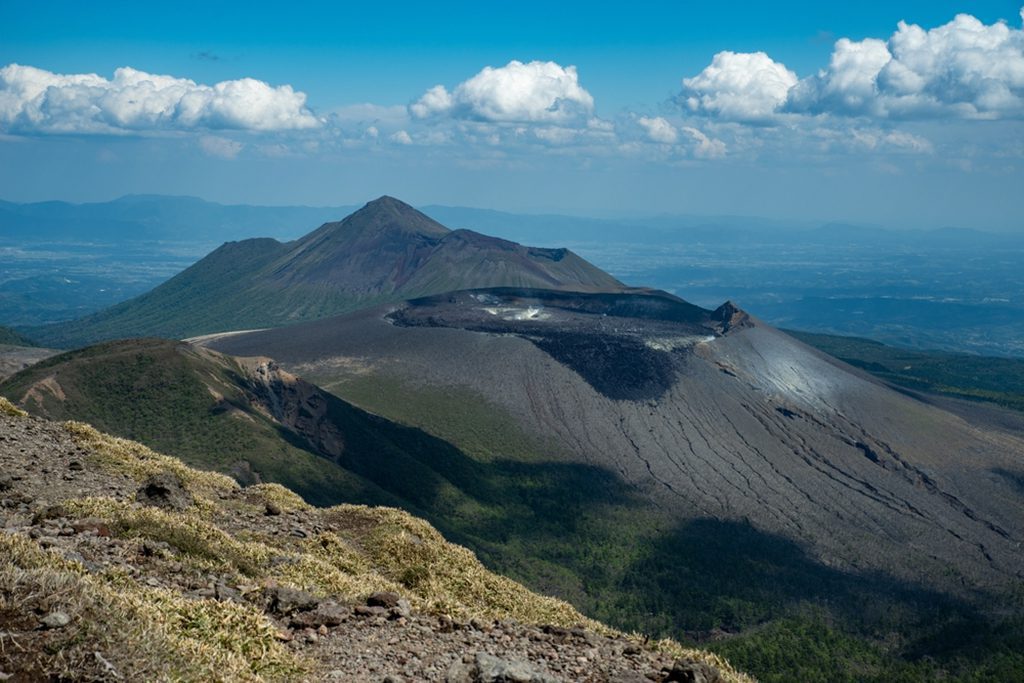
Spectacular view of Shinmoedake and Mt. Takachiho from Mt. Karakuni. Image source: TETSU Snowdrop/Shutterstock.com
Shinmoedake, a member of the Mount Kirishima series of volcanoes, is located on Kyushu, Japan’s third-largest island. It is notable for its stunning crater. In the 1967 James Bond film, “You Only Live Twice,” the villain Blofeld utilized the caldera as his center of operations. The last eruption of the volcano in 2018 buried the once-beautiful crater lake behind a dome of molten rock. The hiking in Shinmoedake is excellent. Spectacular views of the surrounding mountains of Kirishima-Yaku National Park can be had from its 1,421-meter-high rim.
7. Mount Kusatsu-Shirane
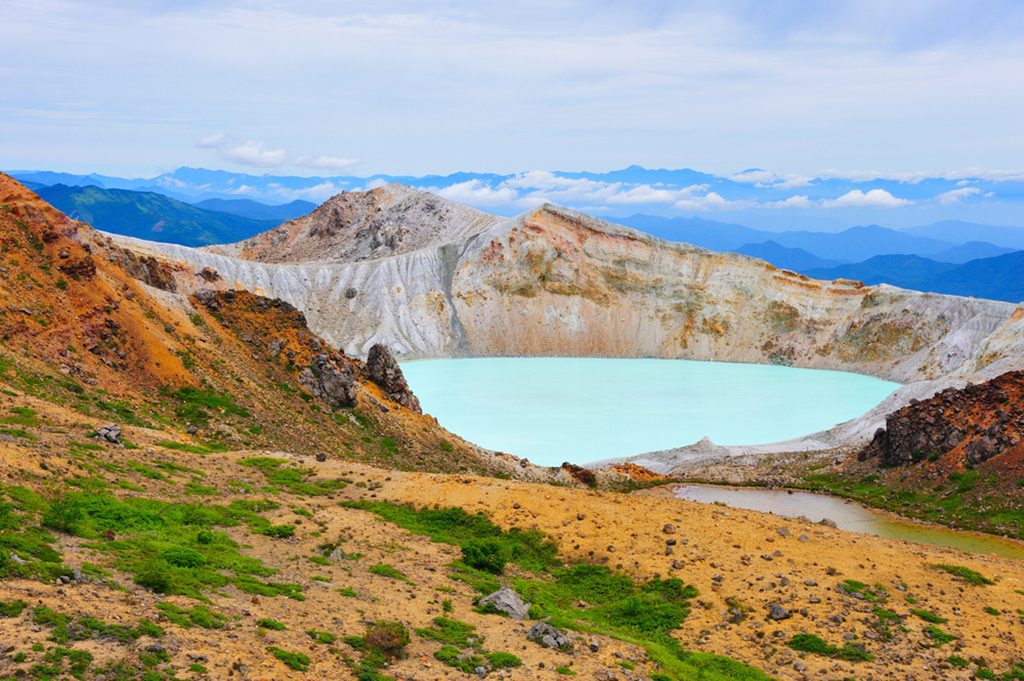
Serene Yugama Crater Lake nestled in Mt. Shirane. Image source: Worakit Sirijinda/Shutterstock.com
Mount Kusatsu-Shirane, located in Gunma Prefecture and towering above the onsen town of Kusatsu, is a popular tourist spot owing to its beautiful surroundings, high peak, and plenty of well-defined hiking trails. The mountain is made up of a cluster of overlapping volcanic cones, and its highest point is 2,171 meters above sea level. There are also three glittering crater lakes hidden among its upper realms. The largest of them, Yugama, stands out from the otherwise arid area surrounding the mountain because of the vivid colors of its waters. Various people visit Mount Kusatsu-Shirane throughout the warmer months of the year to enjoy the mountain’s many hiking routes, while the mountain’s snowy winters bring out skiers in droves. The hot springs at the volcano’s foot also attract many visitors year-round.
6. Mount Ontake
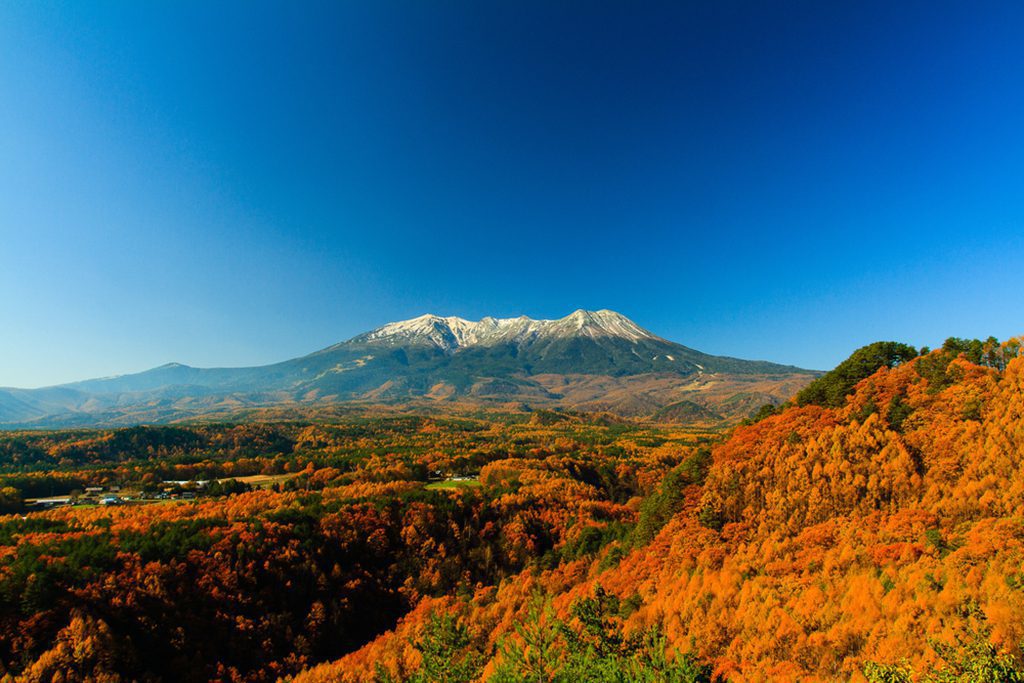
Vibrant autumn foliage adorning Mount Ontake in Nagano Prefecture. Image source: Veerachart/Shutterstock.com
Mount Ontake, at 3,067 meters in elevation, is the second-highest volcano in Japan, behind the more famous Mount Fuji. Five glistening crater lakes can be found scattered throughout the massive volcano, the highest of which is Nino at 2,905 meters in elevation. Numerous worshippers and pilgrims make the journey to Mount Ontake each year to follow the ancient pilgrimage path. This leads you through some stunning scenery, and the views from the peak are spectacular. The magical mountain is home to some very spectacular hot springs and ski resorts in addition to its already jaw-dropping aesthetic value. However, in 2014, when 63 people were killed, Mount Ontake suddenly erupted, despite its reputation for safety.
5. Mount Asama
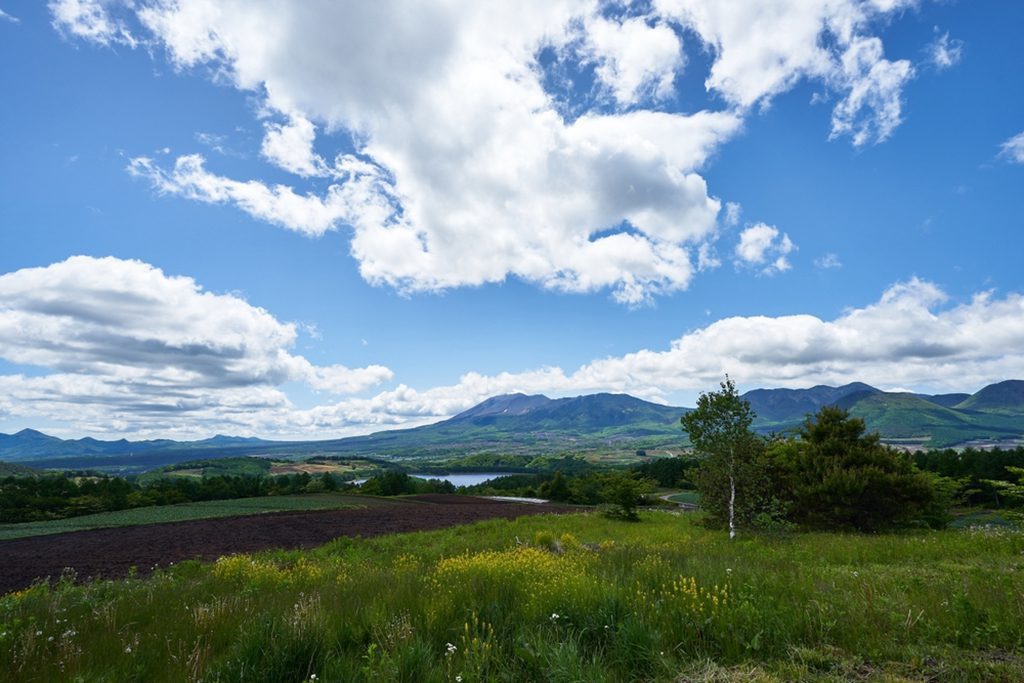
Scenic view of Lake Tashiro and Mount Asama in Gunma Prefecture. Image source: osap/Shutterstock.com
Mount Asama, which is located in the middle of Japan’s main island of Honshu, rises to a height of 2,568 meters (8,425 feet) above sea level and towers above the popular tourist destination of Karuizawa. The mass death toll from the 1783 eruption of Mount Asama is what gave the mountain its fame. Honshu’s most recent and powerful volcanic eruption occurred in 2009, and its ash cloud reached as far as Tokyo. Mount Asama is still a popular tourist site, despite the threat of a new eruption. Skiers and snowboarders go to the nearby slopes of the summit, while spa-goers flock to the area’s natural hot springs.
4. Sakurajima
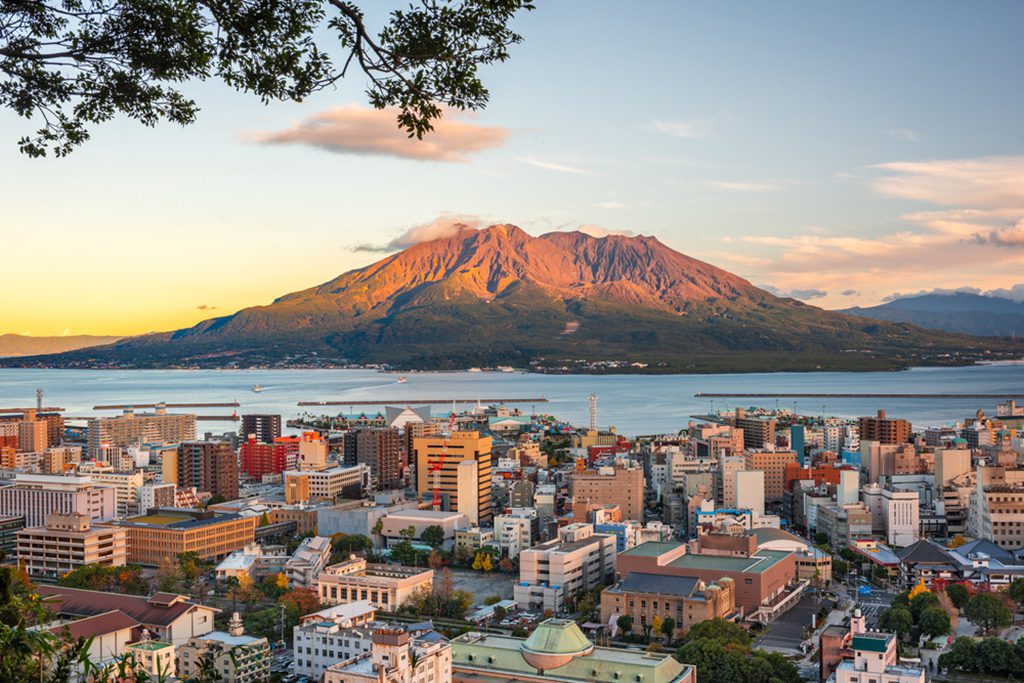
Breathtaking view of Kagoshima skyline with the majestic Sakurajima Volcano during sunset. Image source: Sean Pavone/Shutterstock.com
The three volcanoes that make up the stratovolcano Sakurajima tower above Kagoshima, a historical city on Kyushu Island. To put it simply, Minami-dake is the most recently active of them. Constant ashfall threatens the metropolis below. Those who want an exciting challenge, such as being near a real, active volcano, are rarely let down. Excellent views can be seen at Yunohira Lookout, which can be reached in about two hours on foot or minutes by vehicle, but tourists are not allowed to hike up to the brink of the dangerous crater.
3. Mount Unzen
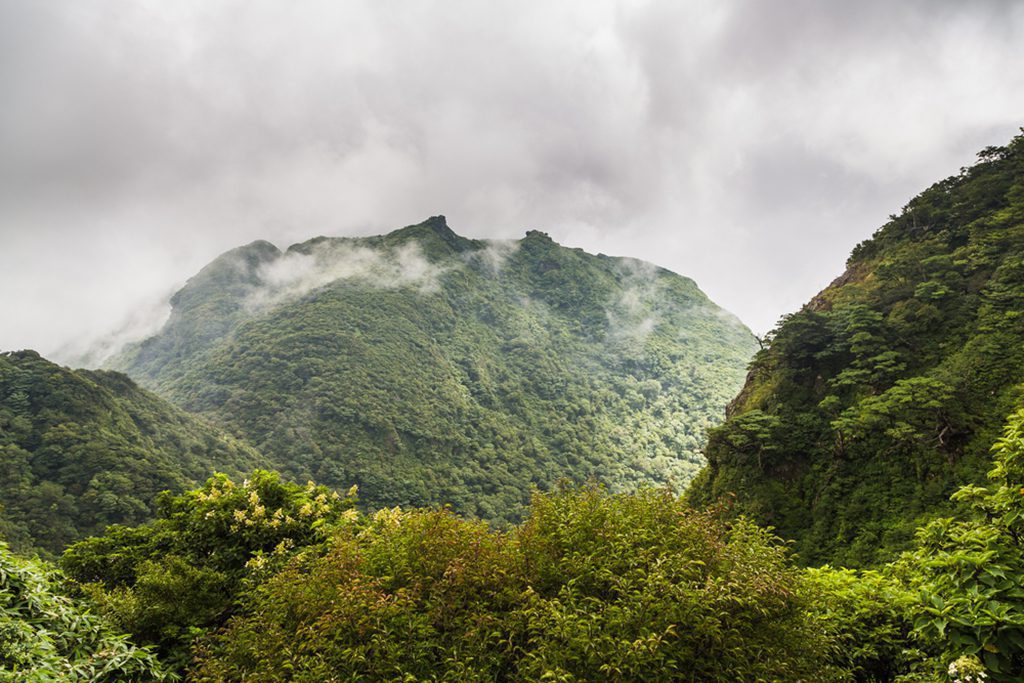
Adventurous journey to the top of Mount Unzen in Kumamoto. Image source: kan_khampanya/Shutterstock.com
Located on the island of Kyushu, the Mount Unzen volcanoes are easily accessible from the city of Shimabara. Until recently, it was believed that these volcanoes had gone dormant after erupting six million years ago. In 1934, the area around the park became a national park, and a small village developed to serve park visitors. Mount Fugen, one of the volcanoes, started erupting frequently in 1990. The mountain is now inactive, and hikers can enjoy the views from the 1,359-meter (4,490-foot) top. Most hikers start their ascent from Mount Myoken, which can be reached by gondola in about three minutes from Nita Pass.
2. Mount Aso
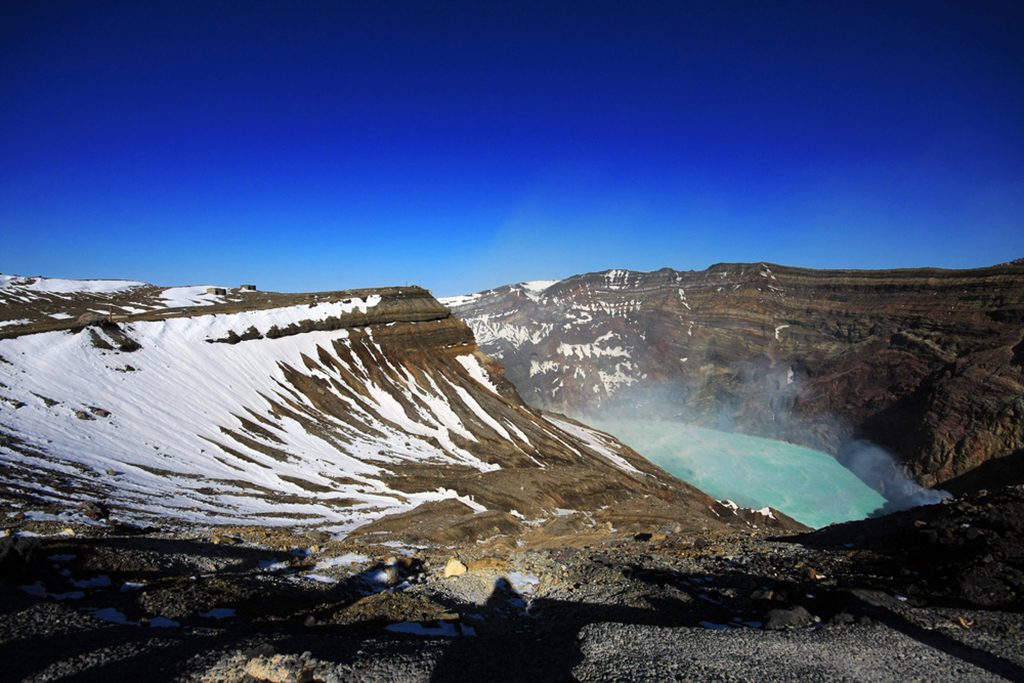
Magnificent view of Naka Crater, part of Aso San volcano. Image source: wunchana/Shutterstock.com
Five different volcanic summits make up Mount Aso, also known as Aso-san. Aso-san is a huge volcanic region in southern Kyushu, Japan, close to the city of Kumamoto. It encompasses whole villages. Mount Nakadake, the most popular of the area’s five volcanoes, is still active, but when it releases toxic fumes, the whole region is evacuated. It’s not only Mount Fuji that tourists go to, though. Hikes in the area might be as short as an hour or as long as a day. A heliport next to the Mount Aso Museum allows tourists to book breathtaking but pricey flyovers over the museum grounds.
1. Mount Fuji
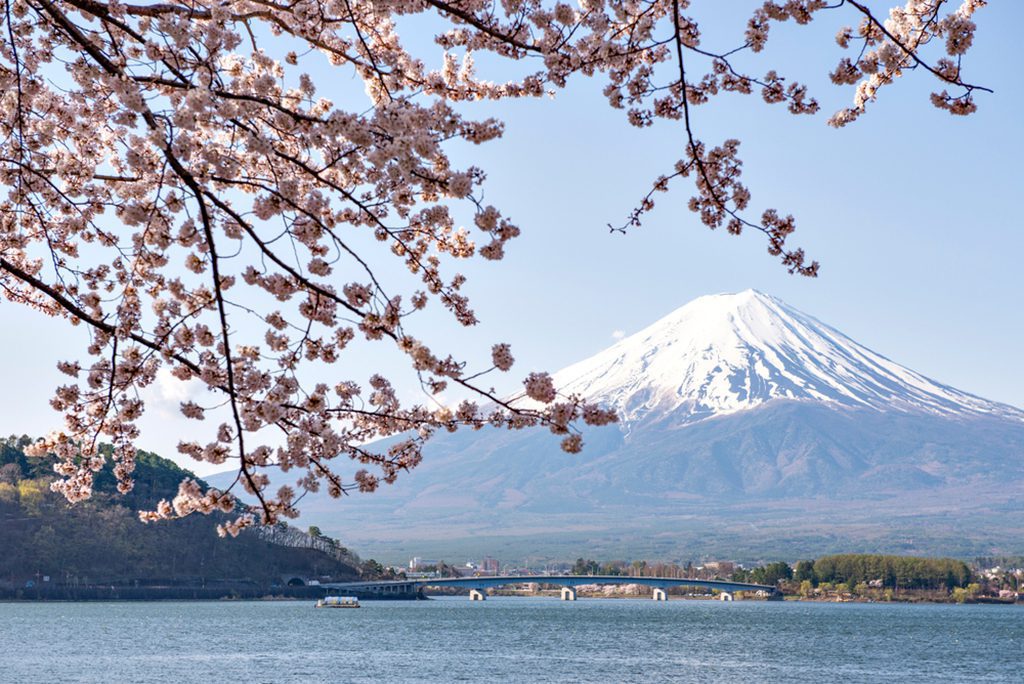
Captivating view of Fuji Mountain and blooming pink sakura in Kawaguchiko Lake. Image source: IamDoctorEgg/Shutterstock.com
Mount Fuji, Japan’s most famous mountain, can be reached by train in less than two hours from the capital city of Tokyo and is climbed by more than 300,000 tourists each year. According to legend, Mount Fuji was created in a single day, but geologists think that the present-day volcano really erupted over the remains of an even earlier volcano around 10,000 years ago. There is a post office at the pinnacle of Fuji so that the many people who make the journey to its 3,800-meter (12,400-foot) zenith can mail postcards back home. However, getting there is no easy feat. The neighboring Tenjo-Yama Park, where a cable car lifts guests 1,000 meters (3,000 feet) up to the Fuji Viewing Platform, is a great alternative for those who want a less physically demanding trip but still want to see Fuji.


